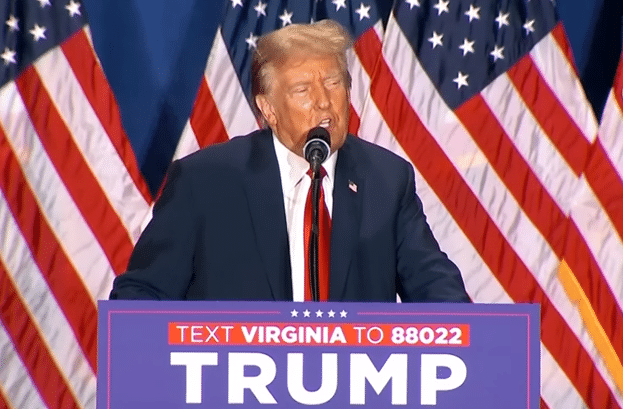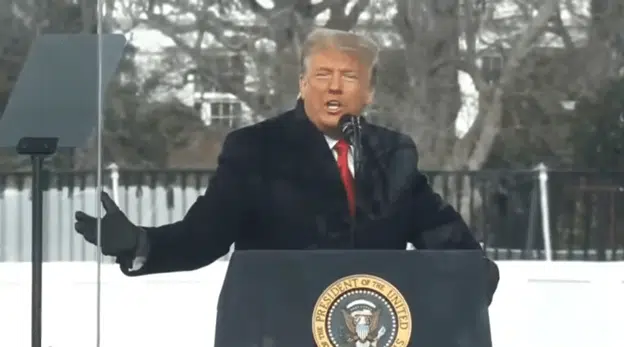By Bill Wilson
Last week’s Super Tuesday primary contests solidified Former President Trump as the GOP nominee after Gov. Nikki Haley’s lackluster performance led her to suspend her campaign, and revealed Trump’s working-class coalition is only growing stronger.
Trump swept the primaries winning over a dozen states and solidified his support among working and middle-class voters, as well as making significant inroads with minorities and younger voters on Super Tuesday.
The vast majority of Republican support went to Trump in Virginia, but the state’s open primary system allows independents and Democrats to vote in the GOP primary and that is where a bulk of Haley’s support stemmed from.
Exit polls from the Washington Post reveal Trump earned a full 79% of Republican votes in Virginia, while Haley earned just 19%. However, 40% of the vote in Virginia’s GOP primary was estimated to stem from non-Republicans, and Haley dominated among Democrats and narrowly won independents.
Around 30% of voters in Tuesday’s Virginia primary were independents according to exit polls and Haley narrowly won them by just one point – 49% to 48%. It is worth noting that Haley won Virginia independents by a much smaller margin – just one percentage point – than she won South Carolina independents who supported her by 25 points. Among the 10% of the electorate who identified as Democrat, Haley dominated, winning 84% of their vote to Trump’s 11%.
While Trump unsurprisingly cleaned up with voters who identified as Very Conservative and with White Evangelical Christians, Tuesday’s primaries revealed the wide, economically driven coalition he is building among working-class voters.
A full 72% of Virginia voters on Tuesday said their most important issues were either the economy (34%) or immigration (38%) and Trump won by a landslide with voters who prioritized both issues.
Trump won voters who said their number one issue is the economy by a nearly 40-point margin – 68% to 29% – and he won voters who prioritize immigration by an even wider 58-point margin – 78% to 20%. Haley won the small 11% of Virginia voters who said foreign policy was their number one issue by 50 points – 74 to 24%.
Trump dominated among younger, economically driven voters, minorities, and those without a college degree, further strengthening his working-class coalition. In Virginia, Trump won younger voters by the widest margin of any age group. He won under thirties by a wide 33 points – 64% to 31%. Haley did slightly better among Millennials, but Trump cleaned up with senior voters winning their vote by 26 points, 62% to 36%.
Trump also bested Haley among non-whites in Virginia, winning their vote by 30 points – 62% to 32% – and he won non-college voters by even more.
Trump won the non-college vote by a striking 59-point margin – 78% to 19% – proving that an America First coalition of working-class voters were active participants on Super Tuesday.
These numbers are more striking when reflecting on the pivotal Virginia Governor’s Race in 2021, when conservative newcomer Glenn Youngkin won a surprise victory against incumbent leftist Terry McAuliffe.
In that race, research conducted by Americans for Limited Government Foundation revealed that Youngkin moved the needle the most in Fairfax County precincts with working-class white, Hispanic, and Asian populations. It was largely a working-class coalition that pushed Youngkin over the finish line, and that voice was strong on Tuesday.
I’ve written before how the non-college vote is a strong predictor of the winner in presidential elections dating back as far as the 1980s. We know that the only time in modern election history when non-college voters have supported a presidential candidate who did not go on to win the general election was in 2020, when Biden lost non-college voters 48%-50% but won the election.
We also know that in the last two presidential election cycles, non-college voters have shifted significantly toward the GOP, throwing their support behind Trump in 2016 and 2020, after flipping to Democrats for Obama in 2008 and 2012.
Trump’s growing support among non-college voters, as well as his ability to court traditionally Democratic groups – younger voters and minorities – is further proof of the growing working-class coalition that is the core of the modern conservative movement.
Bill Wilson is the former president of Americans for Limited Government.








